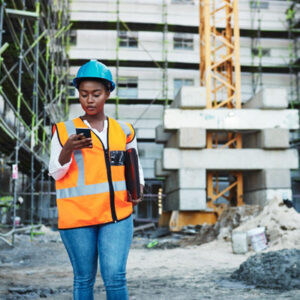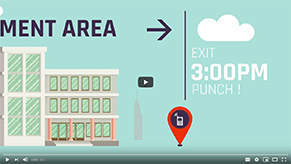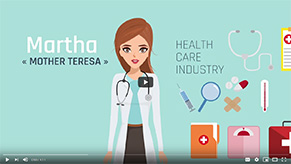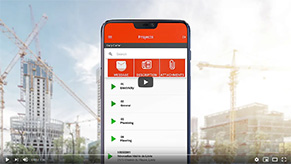
15 March, 2022
Mobile-Punch
SHARE
Ideas to Create a COVID-19 Secure Worksite
Public health measures have been part of our life for the better part of 2 years now, and the situation is not likely to change anytime soon. Every time we think we see the light at the end of the tunnel, a new variant emerges (Delta, Omicron, etc.). Face coverings, hand sanitizer, remote work and social distancing are all elements of workplace control measures that businesses put in place to reduce the risk of COVID-19 transmission.
What is a COVID secure worksite?
Unfortunately, every workplace is at risk of COVID-19 transmission. COVID secure worksites are work settings that are as safe as possible for employees, customers, and site visitors. COVID-19 transmission risks must be identified, evaluated, and minimized.
How to make your worksite COVID-19 secure
Here are 7 tips to make your worksite COVID-19 secure:
- Perform a COVID-19 risk assessment
- Share the results of the risk assessment
- Promote physical distancing
- Establish who needs to return to the office
- Manage visitors
- Implement hygiene measures
- Follow industry-specific advice
1. Perform a COVID-19 Risk Assessment
Employers must conduct a COVID-19 risk assessment of their workplaces as quickly as possible according to the government in order to develop and implement effective workplace control measures. Here are three types of control measures that can be put into action to reduce the risk of transmission in your workplace:
- Engineering control measures: Physical alterations to the workplace provide a barrier between individuals and the hazard. Physical barriers between people, such as screens between desks, can be used as engineering controls.
- Administrative control measures: Cleaning the workplace and touched surfaces, modifying workplace responsibilities and activities, and restructuring the workplace to make it safer are examples of administrative control measures. Other examples include physical distancing training, distance markings, signs, and improved cleanliness procedures. You can also limit the number of employees who return to work, as well as the number of customers who are allowed on your premises.
- Personal protective equipment: Personal protective equipment (PPE) such as gloves, masks, and visors are the least effective form of coronavirus risk mitigation measure.
Workplace control measures that should be applied vary depending on the type of economic activity being performed, but this article covers some of the most common ones. It’s important to gather information from different departments and write the findings of the risk assessment so that this knowledge can be easily shared with workers after you’ve identified what must be amended to the workplace safety plan.
2. Share the Results of the Risk Assessment
Employers should inform their employees of the results of their risk assessment. Employees will feel safer at work if you share the results of your COVID risk assessment, and they will be more likely to take an active role in reducing transmission risks. While employers are primarily responsible for workplace health and safety, employees also play an important role to make sure safety measures are followed.
Risk assessment results might be communicated via email, training, meetings, or site instructions. Employers can also display a notice in their workplace to demonstrate that they have followed government instructions on managing COVID-19 transmission risks.
3. Promote Physical Distancing
The government’s initiatives to get people back to work rely heavily on physical distancing. The risk of viral transmission through the air can be greatly minimized by keeping staff and customers at least two meters apart. Businesses may install social barriers, or limit the number of employees and customers allowed in the workplace.
Signage can also serve as a reminder to keep a safe space between people. If certain professional tasks are impossible to do while physical distancing, you should consider whether the personal protective equipment provided to your workers mitigate the risk of exposure. It’s important to make sure all work tasks can be performed in a safe environment!
How do you introduce new technology into the workplace?
4. Establish Who Needs to Return to the Office
Returning to work should be done in stages to ensure that health and safety measures are in place and that you provide a secure work environment for the limited number of employees that will be back in the office. Only vital employees should be encouraged to return to work at first. Anyone who has the ability to work from home should work remotely. For organizations that require employees to operate in construction sites or restricted quarters, limiting the number of employees returning to work is especially critical.
5. Manage Visitors
It’s crucial to manage employees as they return to work while also reducing the number of unnecessary visits to the office. Customers and site visitors should be informed of the social distancing measures in place and businesses can limit the number of people allowed on-site at one time. Companies should minimize close contact by implementing one-way flow routes through buildings, controlling worker arrival and departure times, and optimizing work schedules.
6. Implement Additional Hygiene Measures
Workplace hand hygiene and a solid workplace safety plan have never been more important. Surfaces should be cleaned and disinfected regularly, hand sanitizer dispensers should be available at key locations on the worksite, and face coverings should be worn by everyone on the premises.
Waste must also be considered; if your employees use tissues or disposable PPE, these must be put into closed bins and disposed of in a sanitary manner. By using posters, meetings, and training sessions to promote hygiene in the workplace, you can persuade employees to take additional hygiene precautions.
7. Follow Industry-Specific Advice
The tips mentioned in this article are just a few of the safeguards that can help you ensure COVID-19 secure workplace. Any advice generated expressly for your industry, such as sector-specific government guidance or advice from trade organizations should be taken into account. For example, the Canadian Construction Association has developed a set of COVID-19 site operating procedures tailored for construction sites.
How Technology is Changing the Construction Industry
How Mobile-Punch can help you create a COVID-19 secure worksite
As Canada’s most popular time-tracking application, Mobile-Punch can help you create a safe workplace environment for employees in the office and those who work remotely. Businesses of all sizes can use Mobile-Punch to better manage their workforce, schedules, and tasks. Moreover, a health form (compliant with CNESST and INSPQ requirements) is also included in the application to ensure that employees who come into work do not have symptoms.
Mobile-Punch helps employers keep track of their employees’ arrival and departure times as well as track their trips to work sites using a geolocation feature. Clocking in is safer as it is contactless.
Here is an overview of the services available in our time tracking app:








